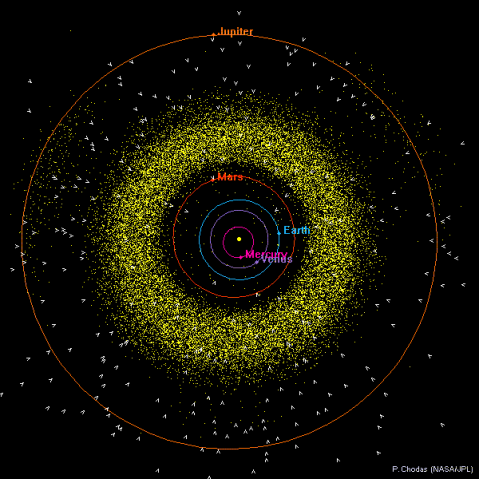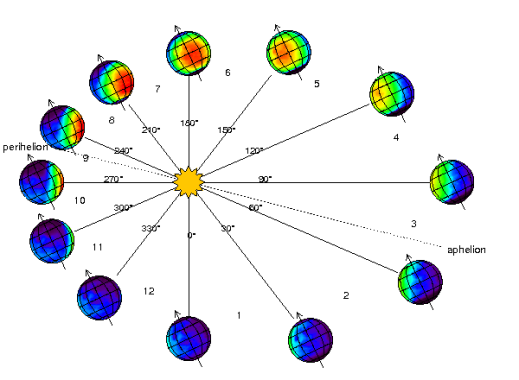Happy Aphelion
Today marks Mars’ passage through aphelion, its furthest point in its orbit from the Sun. At aphelion, Mars is moving slowest in its orbit while at perihelion, Mars is closest to the Sun and moving at its fastest velocity. Mars has a more eccentric or elliptical orbit than Earth, and has the second highest eccentricity out of the 8 planets in our Solar System.

Plot of the inner solar system orbits (yellow dots are asteroid positions). You can see how eccentric Mars’ orbit is compared to the other inner Solar System planets – image Credit: JPL Solar System Dynamics/P. Chodas/ NASA/JPL http://ssd.jpl.nasa.gov/?ss_inner
The Red Planet’s orbital eccentricity may actually be an important factor in Mars’ climate. The Southern hemisphere right now is pointed away from the Sun and the carbon dioxide ice sheet is growing. Compared to the Northern hemisphere, Southern summers are shorter (because Mars is at perihelion during that time) and the solar insolation is more intense while the Southern winters are colder and longer. This dichotomy may be responsible for why seasonal fans and blotches are abundant during the thawing of the carbon dioxide ice sheet in Southern Spring and Summer, but fans and blotches are spotted far and in between in the same seasons in the Northern Hemisphere.
So far seasonal fans and blotches have mainly been spotted on the slopes of dunes at the Martian North Pole and tend to be smaller than their Southern hemisphere counterparts. One of the goals of Planet Four is to better study this. With your measurements of the frequencies, locations, and sizes of fans we’ll eventually compare Northern hemisphere fans to the occurrence and sizes of fans in the Southern hemisphere.

